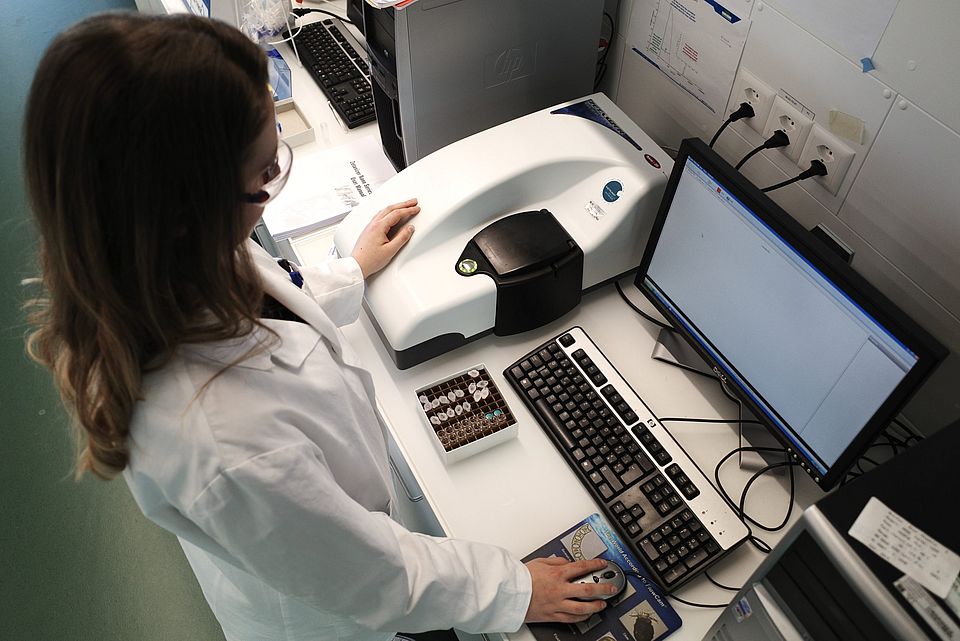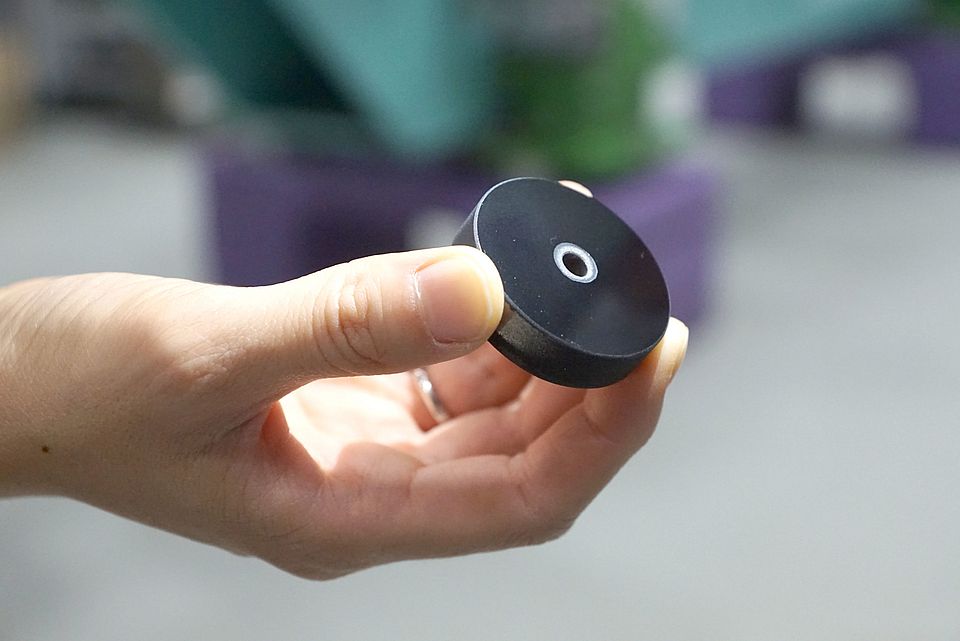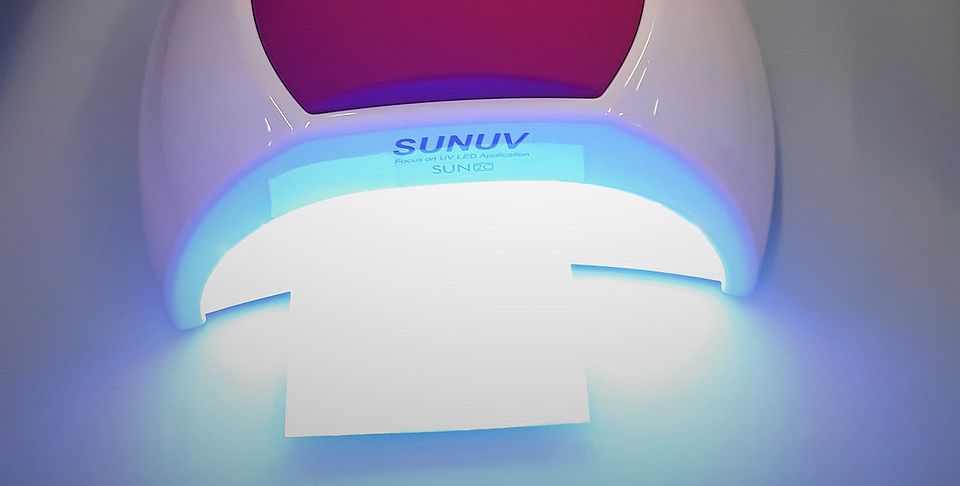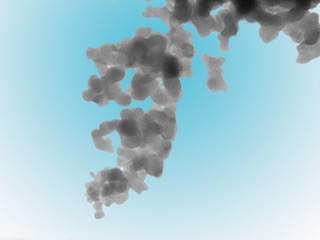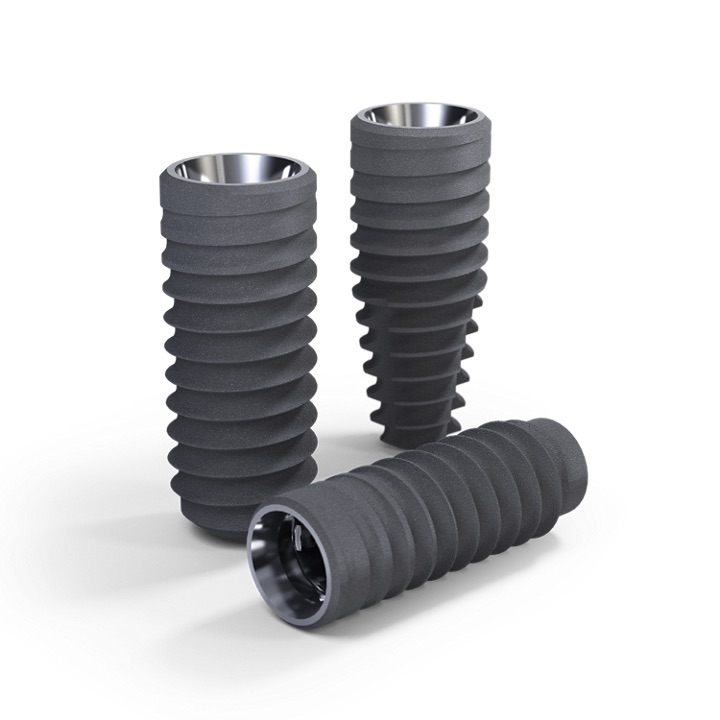Argovia Projects 2020
The following projects started in 2020.
| PROJECT | PROJECT LEADER | COLLABORATORS |
|---|---|---|
| 15.01 ForMeL - Mechanoresponsive liposomes - development of a preclinical formulation and a pilot scale manufacturing process | Prof. Dr. Oliver Germershaus (FHNW Muttenz) | Dr. Christian Grünzweig (PSI/ANAXAM) Prof. Dr. Martin Kuentz (FHNW Muttenz) Dr. Andreas Zumbühl (Acthera Therapeutics AG, Basel) |
| 15.08 Promucola - Protective multi-component layer | Prof. Dr. Michael de Wild (FHNW Muttenz) | Dr. Christian Grünzweig (PSI/ANAXAM) |
| 15.09 ReLaFunAF - Reactive Layer Functionalization of UV Curable Coatings Using Microscale Patterning and Nanoscale Architecture Design for Anti-Fingerprint Properties | Dr. Sonja Neuhaus (FHNW Windisch) | Dr. Celestino Padeste (PSI) Dr. Anna Di Gianni (RadLab AG, Killwangen) |
| 15.10 SiNPFood - Characterization of silica nanoparticle contamination in complex nutritional products | Dr. Sina Saxer (FHNW Muttenz) | Prof. Dr. Cornelia Palivan (University of Basel, Dept. of Chemistry) Dr. André Düsterloh (DSM Nutrition Products AG, Kaiseraugst) |
| 15.11 TiSpikes - Antibacterial titanium nanostructures by helium plasma irradiation | Dr. Laurent Marot (University of Basel, Dept. of Physics) | Prof. Dr. Ernst Meyer (University of Basel, Dept. of Physics) Prof. Dr. Sebastian Kühl (University of Basel, Dentistry) Dr. Kahled Mukaddam (University of Basel, Dentistry) Dr. Joachim Köser (FHNW Muttenz) Dr. Raphael Wagner (Institut Straumann AG, Basel) Dr. Joëlle Hofstetter (Institut Straumann AG, Basel) |
15.01 ForMeL - Delivery under pressure – Nano Argovia project ForMel explores mechanosensitive liposomes
In the Nano Argovia project ForMeL, a research team is developing liposomes that can be loaded with pharmaceutical agents which are subsequently released in response to changes in pressure. Mechanoresponsive liposomes of this kind could be used to directly target blood clots in vessels affected by arteriosclerotic narrowing, dissolving them without the need to flood the patient’s entire body with anticoagulants.
Narrowing of a blood vessel – caused by sclerotic deposits, for instance – can increase the shear forces exerted on solids in the bloodstream by at least an order of magnitude. It is possible to manufacture synthetic lipid membrane vesicles (liposomes) that break apart when subjected to these increased shear forces. The company Acthera Therapeutics hopes to exploit this principle to develop a procedure for delivering pharmaceutical agents directly to the narrowed area.
A diverse team
Under the coordination of Professor Oliver Germershaus (FHNW), industry partner Acthera Therapeutics AG in Basel is working closely with researchers from the School of Life Sciences (FHNW) and the ANAXAM Technology Transfer Center in pursuit of this goal.
For now, the team is conducting additional research on the production and formulation of the liposomes at laboratory scale. This includes developing analytic methods that can be used to characterize the liposomes, and optimizing the process of loading them with an appropriate agent.
To ensure problem-free storage of the manufactured liposomes, the researchers are developing a freeze-drying process. In a subsequent stage, every step in the production, formulation and freeze-drying will be extrapolated to the pilot scale to enable production of material for the first preclinical trials.
The combined expertise of the various project partners paves the way for efficient further development of mechanoresponsive liposomes with a view to successful preclinical development.
"For a recently formed start-up like ours, the Nano Argovia program is an ideal opportunity to create the technical prerequisites for preclinical and clinical testing of mechanoresponsive liposomes.”
Dr. Andreas Zumbühl, Chief Scientific Officer, Acthera Therapeutics AG (Basel)
Further information:
Acthera Therapeutics AG
https://acthera-therapeutics.com
ANAXAM
https://www.anaxam.ch
School of Life Sciences (FHNW)
https://www.fhnw.ch/de/die-fhnw/hochschulen/lifesciences
15.08 Promucola - Averting wear and tear – Testing a ceramic coating for titanium implants in the Nano Argovia project Promucola
In the Nano Argovia project Promucola, researchers are developing a ceramic coating for titanium implants to make them more resistant to abrasion.
Joint implants are commonly made from metals such as cobalt-chrome alloys, because of the stability these materials offer. Yet they can also trigger allergic reactions, which cause problems that can ultimately lead to the loss of the implant. Titanium implants, already in use in dentistry, are a viable alternative for joint implants due to their high biocompatibility and mechanical strength. However, when subjected to constant movement, as is the case with knee, shoulder or elbow joints, untreated titanium surfaces are too susceptible to abrasion.
Close collaboration
In the Nano Argovia project Promucola, an interdisciplinary team led by Professor Michael de Wild of the School of Life Sciences (FHNW) is developing a robust ceramic coating to protect titanium implants against wear. This involves researchers from the School of Life Sciences working in close collaboration with the new ANAXAM Technology Transfer Center (Villigen) and the company Orchid Orthopedics Switzerland GmbH (Baden-Dättwil).
Their goal is to apply a ceramic coating to titanium implants using the plasma spray method, a procedure in which the biocompatible powder mixture is heated and then sprayed onto the implant. The rapid cooling not only leads to the desired layers but also to the formation of metastable phases on the surface, affecting the implant’s hardness and resistance to abrasion. The researchers involved in the project are currently exploring the conditions under which these metastable layers form, and how they can subsequently be removed or stabilized. The results are used to optimize production and develop a procedure for postprocessing the implants.
The cutting-edge materials analysis brought to the table by the ANAXAM Technology Transfer Center means that the tests can be conducted at industrial scale.
"With this project, we hope to further exploit the potential of plasma-based ceramic coatings in order to develop a robust ceramic surface for titanium implants that protects them against wear."
Dr. Armando Salito, Director of Coating Innovation, Orchid Orthopedics Switzerland GmbH
Further information:
Orchid Orthopedics Switzerland GmbH
http://www.orchid-ortho.com/switzerland
ANAXAM
https://www.anaxam.ch
School of Life Sciences (FHNW)
https://www.fhnw.ch/de/die-fhnw/hochschulen/lifesciences
15.09 ReLaFunAF - Fingerprint-free surfaces – The Nano Argovia project ReLaFunAF is devoted to functionalizing surfaces with UV-curable coatings
A team of researchers from the FHNW School of Engineering, the Paul Scherrer Institute and the company RadLab AG in Killwangen is developing a procedure for functionalizing surfaces with coatings that can repel fingerprints.
New possibilities
At present there are numerous applications that involve treating surfaces with coatings that are cured under UV light. Whereas in the past, curing was achieved primarily by recourse to mercury vapor lamps, these are increasingly being replaced by UV LED lights. However, the use of LEDs often results in the formation of “sticky” layers, as the surface cannot be fully cured. “This phenomenon, which is actually a major problem in other respects, opens up entirely new possibilities for functionalizing surfaces,” explains Dr. Sonja Neuhaus of the FHNW Institute of Polymer Nanotechnology (INKA), who is in charge of the project. “The surface still possesses reactive groups that can be used for covalent binding of functional molecules.”
Functionalization in the second step
In a project backed by the Aargau Research Fund, the team working under Sonja Neuhaus joined forces with RadLab to develop a new process* whereby functional components are applied to the sticky layer in a second coating step, and then fixed in place by means of an additional complete round of UV curing.
In this way, the functional layer does not come into contact with the original substrate. This allows functionalizations that would otherwise adhere to the sample poorly or not at all – a crucial benefit of the chosen method.
Broad range of potential applications
The ReLaFunAF project team will now look into how this principle can be applied to treat surfaces so that they repel even fingerprints.
There is huge demand for surfaces with this kind of protection in the production of decorative items or in the automotive and electronics industries. While various methods leading to fingerprint-resistant properties have already been developed, many of them are unsuited to large-scale applications.
For now, the researchers are using targeted “chemical” structuring to test which combination of properties – for example, lipophilic and hydrophilic – is needed to prevent fingerprints from forming. They will subsequently examine the extent to which the architecture of the network at the nano scale influences this repellent effect.
"Ongoing refinement of coating procedures is crucial to our success. For this Nano Argovia project we have the perfect team with which to successfully hone the ReLaFun process in response to a specific issue."
Dr. Anna Di Gianni, Technical Director RadLab AG
Further information:
RadLab AG
https://www.rahn-group.com/en/
School of Engineering (FHNW)
https://www.fhnw.ch/de/die-fhnw/hochschulen/ht
Paul Scherrer Institute
https://www.psi.ch/en
15.10 SiNPFood - Precise monitoring of nanoparticles required in the future – In the Nano Argovia project SiNPFood, researchers are developing a method for the reliable, automated analysis of silicon oxide nanoparticles in complex mixtures
Reduced friction
Silicon oxide and tricalcium phosphate are approved processing aids for foodstuffs and are used at low concentrations to improve the handling of food additives in powder form. By covering the surface of the particles, they reduce the friction between them and thereby improve material flow. For technical reasons, these processing aids may also contain a certain amount of smaller particles (<100 nanometers in diameter). However, the degree of acceptance of these nanoparticles has fallen significantly, and regulatory bodies are currently developing new guidelines for their use and detection in foodstuffs.
Contribution to new standards
The company DSM Nutritional Products AG (Kaiseraugst), which is an industrial partner in the Nano Argovia project SiNPFood, wants to help improve the characterization of nanoparticles. This is necessary so that, even on the nanoscale, food additives can be analyzed in a standardized manner using efficient and reliable detection methods. DSM hopes to contribute to the development of these new standards and regulations with a new analytical method for the determination and quantification of silicon oxide nanoparticles (SiNPs).
Staff at DSM Nutritional Products are pooling their expertise with that of colleagues from the FHNW School of Life Sciences and the Department of Chemistry of the University of Basel. Under the leadership of Dr. Sina Saxer (FHNW), they will conduct their study over the next few months with a focus on typical product formulations in the foodstuffs industry.
Precise analysis of production
The team plans to use a range of characterization methods to analyze nanoparticles at the various stages of production and will also examine the effects on living cells. In turn, this will allow them to optimize the particle characterization process. Given the large number of production samples to analyze and the short window of opportunity, the scientists would prefer a process that is as automated as possible.
Unlike chemical analytics, however, high-throughput methods of this kind are not yet well-established in “nanoanalytics.” Another challenge lies in preparing the samples for analysis, as the SiNPs must not be modified during the preparation process. The scientists will comprehensively characterize typical SiNP additives using a variety of physical and chemical methods – before and after blending them with complex mixtures intended to serve as models of various foodstuffs.
The interdisciplinary team will then evaluate how the different methods can be used to determine the size, charge, agglomeration, and concentration of the SiNPs.
"The Nano Argovia project SiNPFood supports DSM in its efforts to develop a reliable method for the determination of nanoparticles in foodstuffs. This will help us to provide controlled (or certified) nanoparticle-free products."
Dr. André Düsterloh, Principal Scientist at DSM Nutritional Products AG
Further information:
DSM Nutritional Products
https://www.dsm.com/corporate/about/businesses/dsm-nutritional-products.html
School of Life Sciences (FHNW)
https://www.fhnw.ch/de/die-fhnw/hochschulen/lifesciences
Department of Chemistry, University of Basel
https://chemie.unibas.ch/de/home/
15.11 TiSpikes - Fighting bacteria with nanostructures – Titanium implant surfaces given bactericidal properties in the Nano Argovia project TiSpikes
In the Nano Argovia project TiSpikes, an interdisciplinary team is investigating how a nanostructure can deter bacterial growth and the formation of biofilms on titanium implants. Researchers from the University of Basel’s Department of Physics and Department of Dental Medicine are working closely with the School of Life Sciences (FHNW) and Institut Straumann AG (Basel). Dr. Laurent Marot and Dr. Khaled Mukaddam (both from the University of Basel) lead the project.
Avoiding biofilm formation
Bacteria are everywhere – including in and on the human body. Most of them are beneficial, but in some cases they can cause serious problems – for example on implants, when bacteria adhere to them and form thin layers known as biofilms. This causes infections that can ultimately lead to the loss of the implant.
Bacterial growth can be suppressed to some extent by antibiotics. However, more and more bacteria are acquiring resistance to antibiotics. Once a biofilm has formed, even powerful antibiotics are often of no use as only the outer layer of bacteria comes into contact with them. It is therefore desirable to find a solution that prevents bacteria from colonizing the implant in the first place.
Learning from nature
Nature offers multiple examples of surfaces that remain sterile with no need for antibiotics. The wing surface of cicadas, for example, is covered in minute pillars, while the skin of a gecko is equipped with nanostructures that stop biofilms from forming on it. It makes sense to structure the surface of implants in such a way that bacteria cannot grow on them and form biofilms.
The focus of the TiSpikes Nano Argovia project is on surfaces made from titanium and titanium alloys already used in implants. The University of Basel’s Department of Physics has developed a process that can be used to structure the surface of these alloys in a variety of ways.
The researchers are now testing which structures are most effective at thwarting bacteria of different sizes. This is achieved by recourse to different microscopic methods, including scanning probe microscopy to determine the adhesive forces in place between the bacteria and the various surfaces.
Suitable foundation for tissue cells
Yet, the ideal nanostructure – particularly when it comes to dental implants – is not just one that prevents bacterial growth, but one that promotes adhesion of the surrounding tissue cells. The researchers anticipate that this will help minimize bacterial colonization in the space between implant and tissue, thereby preventing infections.
"We are very excited about this project, which will bring together partners with very different areas of expertise. We aim to test the structured implant surfaces in vivo for preclinical assessment with the clear goal of providing our customers with the best possible solutions."
Dr. Raphael Wagner, Head of Surfaces Research, Institut Straumann AG
Further information:
Institut Straumann AG
https://www.straumann.com
University of Basel
https://www.unibas.ch/de
School of Life Sciences (FHNW)
https://www.fhnw.ch/de/die-fhnw/hochschulen/lifesciences

